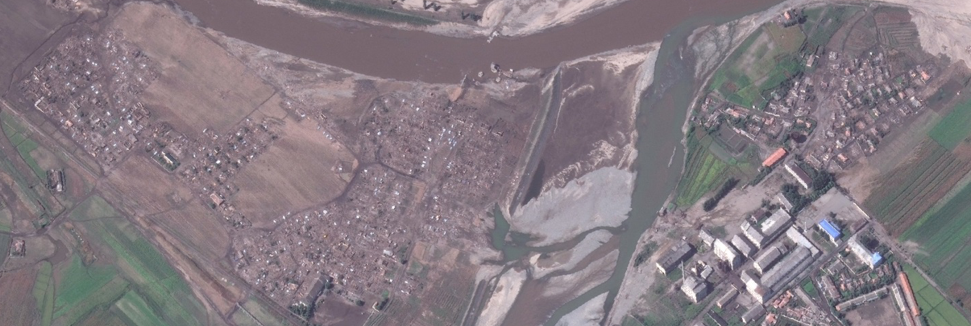
Implications of North Korean Flood
DPRK Flood Damage May Precipitate Health Crisis
Heavy rains triggered by Typhoon Lionrock hit the northern part of North Korea from August 29 – 31, 2016. Extensive damage to infrastructure and agricultural fields occurred as a result. Examining satellite imagery taken on September 15, 2016 is helpful in assessing the extent of flood damage. Images taken earlier in the year also serve as a baseline for comparison.
 Key Takeaways
Key Takeaways
- Imagery shows that significant flood damage has occurred in North Korean territory nearest to the Tumen River and China-North Korea border debilitating an already severely vulnerable area.
- The areas most affected by flooding, North Hamgyong Province and Ryanggang Province (Musan county, Yonsa county, Onsong county, and Hoeryong city), are already neglected by government policies.
- The flood damage has severely stressed existing infrastructure, and will have significant ramifications in the coming months as food insecurity and concerns about the spread of disease will increase.
- For exclusive Beyond Parallel analysis on the potential health and food implications of this flooding, see this commentary by Andrew Natsios, Executive Professor at the Bush School, Director of the Scowcroft Institute of International Affairs, Texas A & M University, and former Administrator, U.S. Agency for International Development from 2001 to 2006.
Since this imagery was taken, North Korea has proceeded to start reconstruction work in some areas but the government is under immense pressure to rebuild quickly and respond to developing on-the-ground conditions. An exclusive report from the area states:
The North Korean authorities have moved to ramp up flooding restorative work, owing to the impending winter and the scores of floodstricken residents who lost their homes in the flooding and still lack sufficient shelter. However, while many residences in Musan County, Hoeryong City, Onsong County, and Kyongwon County have been completed, pressure to meet unrealistic deadlines handed down by the authorities, coupled with lack of oversight and inadequate provision of materials, has resulted in shoddy construction, including the use of bricks that had not properly dried to lay the walls and floors of the homes. Consequently, complaints about the government’s bungled response among affected residents, who are utterly exhausted from successive forced mobilizations, are mounting.
— Choi Song Min, a defector from North Hamgyong Province and reporter for Daily NK.
The government reportedly deployed about 100,000 people to assist flood victims in the affected areas. However, lack of equipment and resources appear to have hampered efforts to respond appropriately to the disaster. The extent of flood damage and the government’s inadequate response to the situation have raised concerns about food security and the potential for a health crisis to erupt in the months ahead.
 OVERVIEW OF OBSERVED FLOOD DAMAGE
OVERVIEW OF OBSERVED FLOOD DAMAGE
There are 6 areas of interest that were examined to assess damage from the 2016 floods. Images from three of these areas are displayed below.
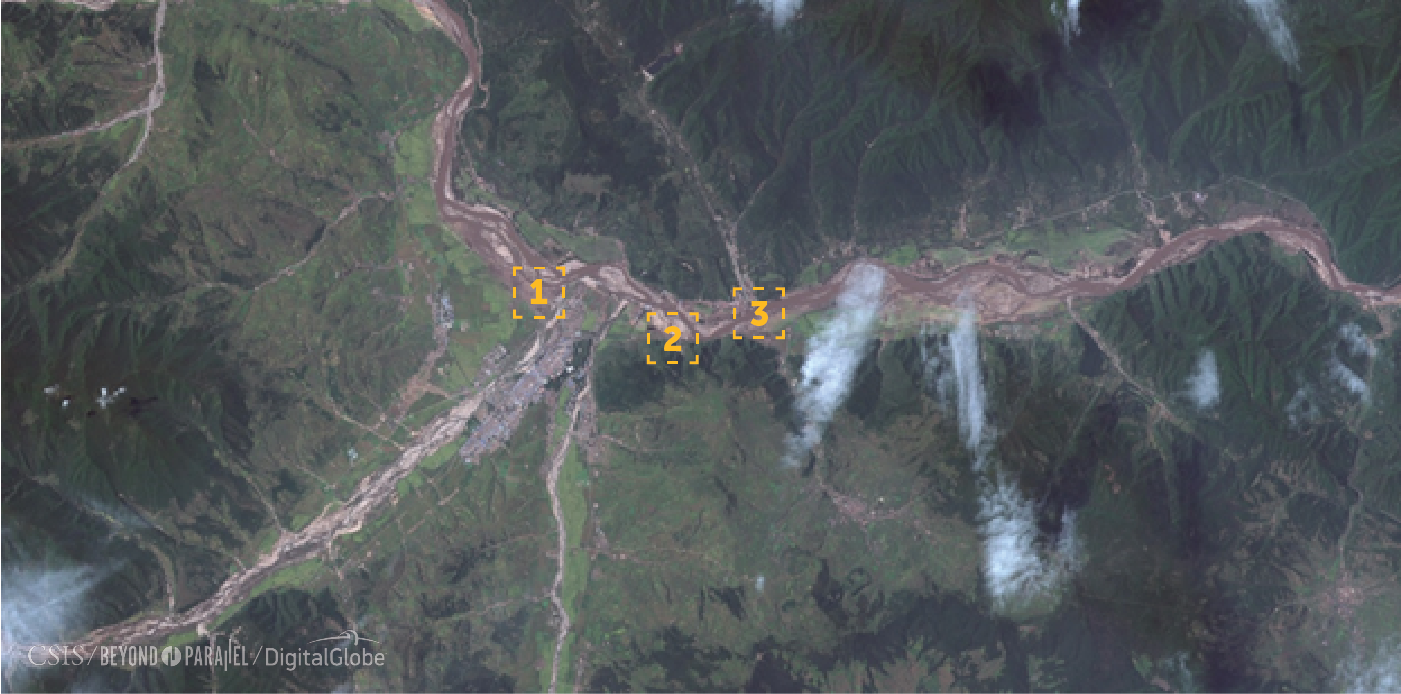
Damage is defined as areas where:
- Infrastructure has collapsed such as roads, bridges, and buildings.
- There are washed out agricultural fields.
- Structures are observed to have damage but may not be completely collapsed.
Assessments about flood damage have come primarily from eye-witness accounts of international aid workers operating inside of North Korea. The Red Cross office in Pyongyang has stated that North Korea is dealing with a “major and complex disaster.” The North Korean government itself claimed that this was the heaviest rainfall the country has experienced since 1945.
This is not, however, the first major flood disaster to hit North Korea. The damage caused by the typhoon was likely exacerbated by long-standing policies that have contributed to deteriorating infrastructure and environmental problems in the area. The government’s failure to adequately respond to the flooding has also be cited as a primary reason for the dire situation. According to UN statistics at least 138 people have died, nearly 400 are missing, 69,000 have been displaced and about 140,000 people have been severely impacted. Additionally, the UN has reported:
- About 30,000 homes were destroyed or damaged.
- 16,400 buildings were damaged including critical infrastructure such as schools, health clinics, and nurseries.
- Nearly 600,000 people need assistance including those that have limited access or no access to clean water.
- 27,000 hectares of agricultural land have been washed out or flooded.
These are the best estimates of the flood damage so far. Yet, there is a possibility that some of the destruction may either be inflated or deflated because international NGOs often have no other choice but to use numbers provided by the North Korean government to calculate estimates. There may be good reasons to both inflate and deflate estimated numbers. North Korea may want to internally minimize the appearance of extensive destruction but externally it may want to emphasize the disaster in order to request more foreign aid from the international community.
The government so far seems to have managed any potential instability that could result from the disaster by strengthening border surveillance and intervening to keep market prices relatively stable. However, the affected areas suffer from severe government neglect—a significant proportion of the population is already estimated to have high levels of chronic malnutrition and vulnerability to infectious diseases.
Currently, the public distribution system (PDS) does not sufficiently provide enough to meet daily nutrition requirements as set by the World Health Organization. Food shortages in the area may grow as cold weather approaches and as harvest yields decline due to flood damage. The spread of infectious diseases is also a growing concern, one that would be compounded by the lack of clean water and malnutrition.
Kim Jong-un is even reportedly avoiding visits to the flood-damaged region because of concerns about disease and his personal safety. Instead, Choe Ryong Hae has allegedly been sent to the inspect the region. The present conditions have prompted Pyongyang to request assistance from the international community and so far China has pledged 20 million yuan ($3 million dollars) to help with relief efforts. Requests for international aid will most certainly continue as conditions worsen this winter. Given the current political climate, and exacerbated by the increasing frequency of North Korea’s missile and nuclear tests, countries and non-profit organizations will have to make difficult decisions about how much disaster relief aid can be provided to help rebuild affected areas in the country.
 Hoeryong, North Korea Infrastructure and Homes Washed Away By Flood
Hoeryong, North Korea Infrastructure and Homes Washed Away By Flood
Pre-flood image
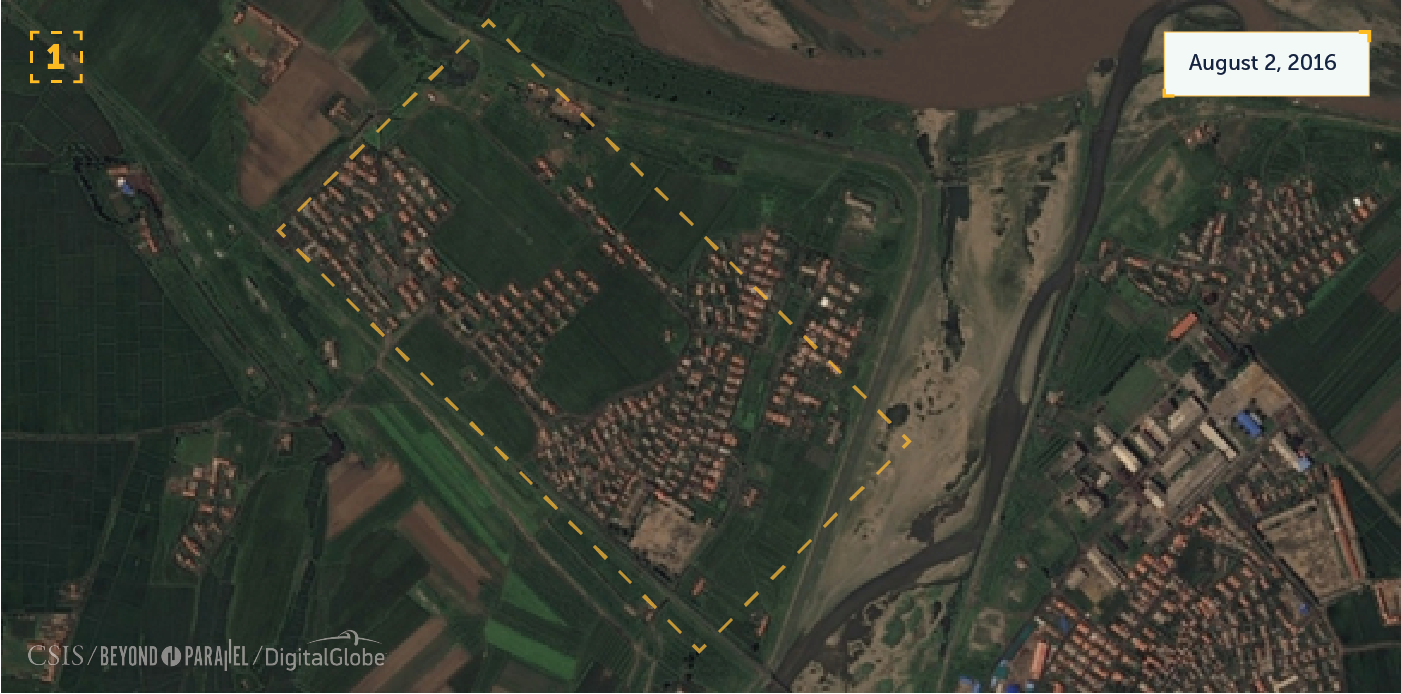
Post-flood image
In the wake of the flooding, 315 residential buildings have been destroyed and surrounding agricultural fields washed out.
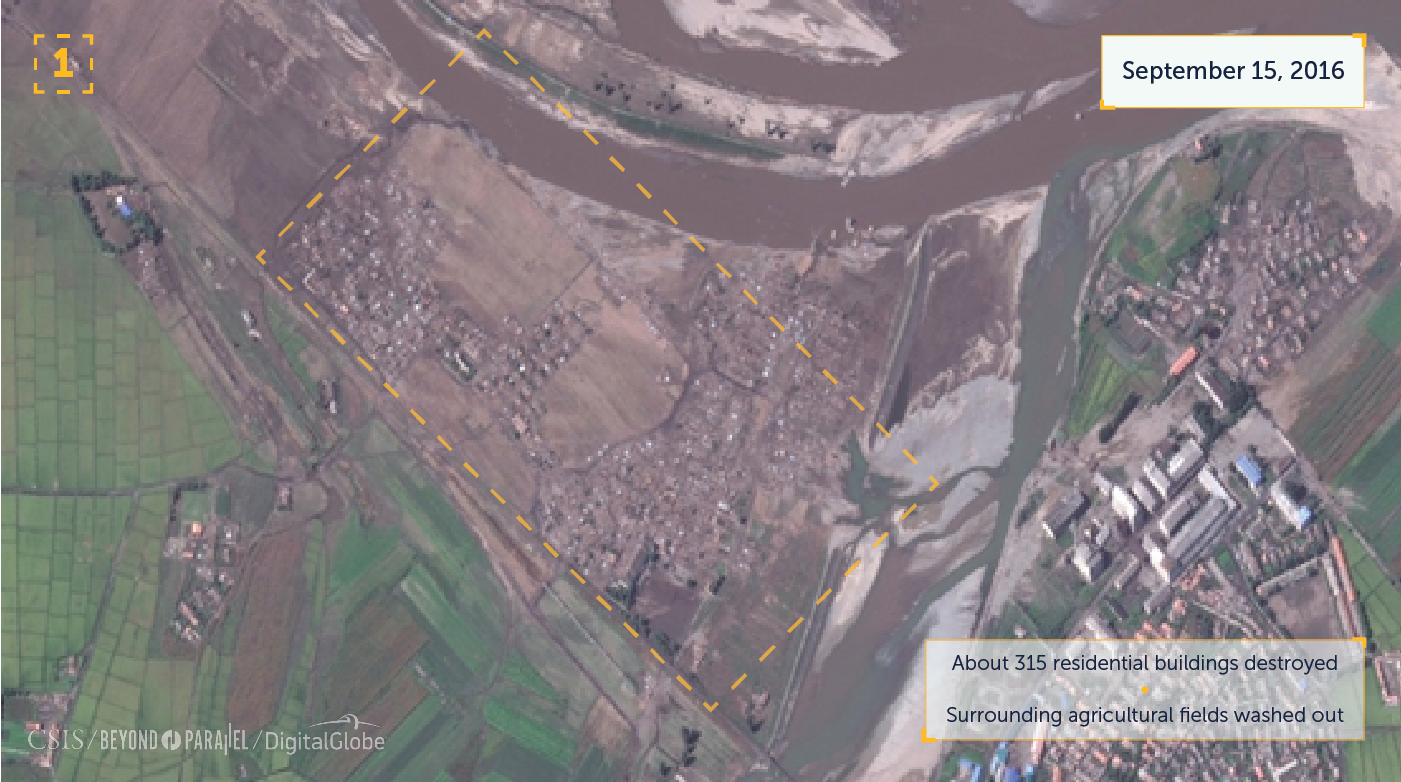
 Hoeryong, North Korea Agricultural Fields Damaged By Flood
Hoeryong, North Korea Agricultural Fields Damaged By Flood
Pre-flood image
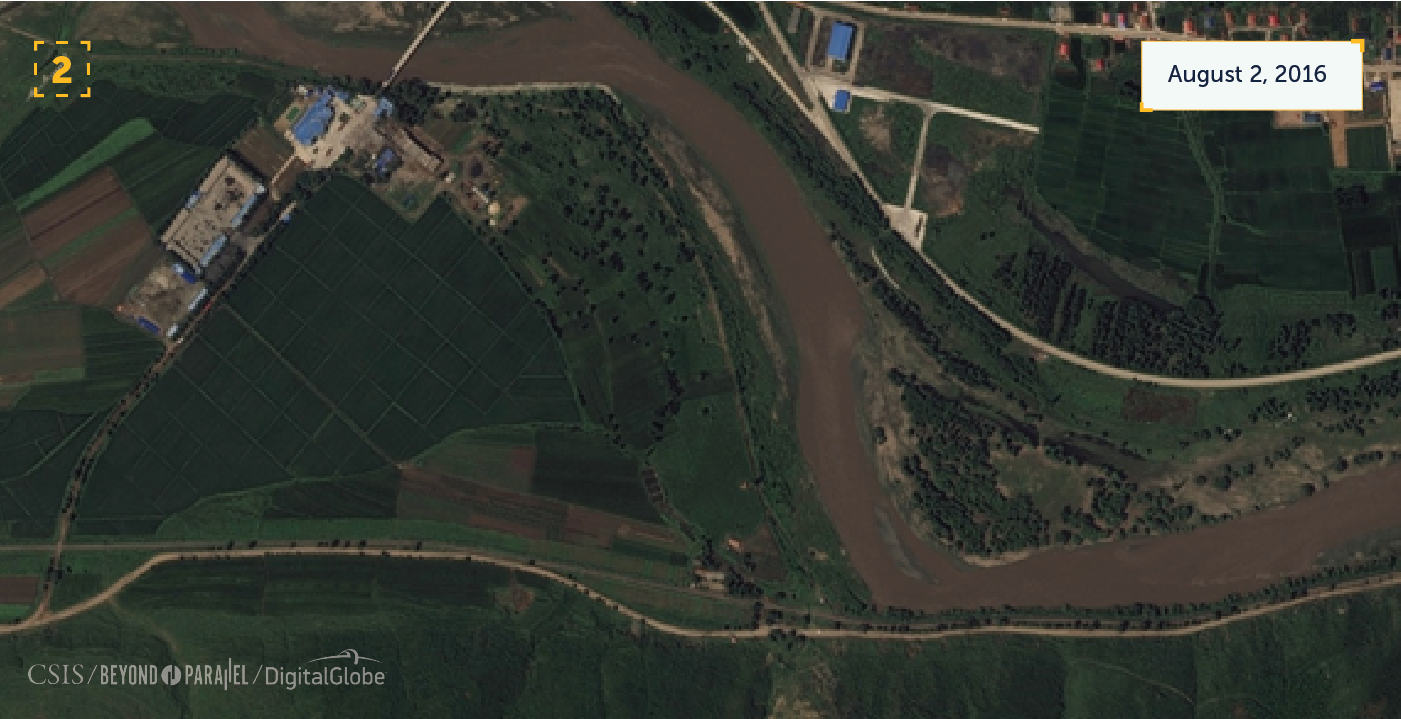
Post-flood image
In the wake of the flooding, agricultural fields were washed out and roads and canals near the Tumen River damaged.
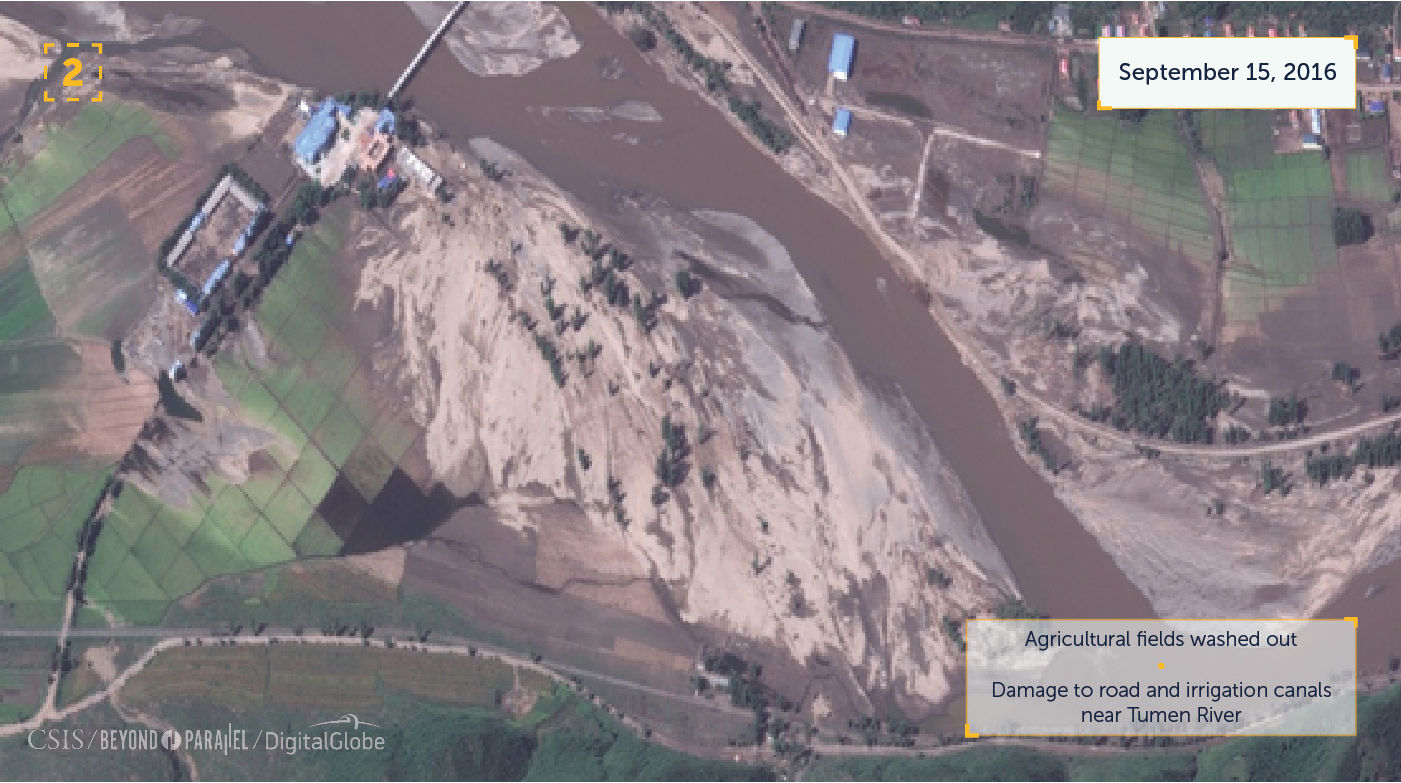
 Hoeryong, North Korea Agricultural Fields Washed Away By Flood
Hoeryong, North Korea Agricultural Fields Washed Away By Flood
Pre-flood image
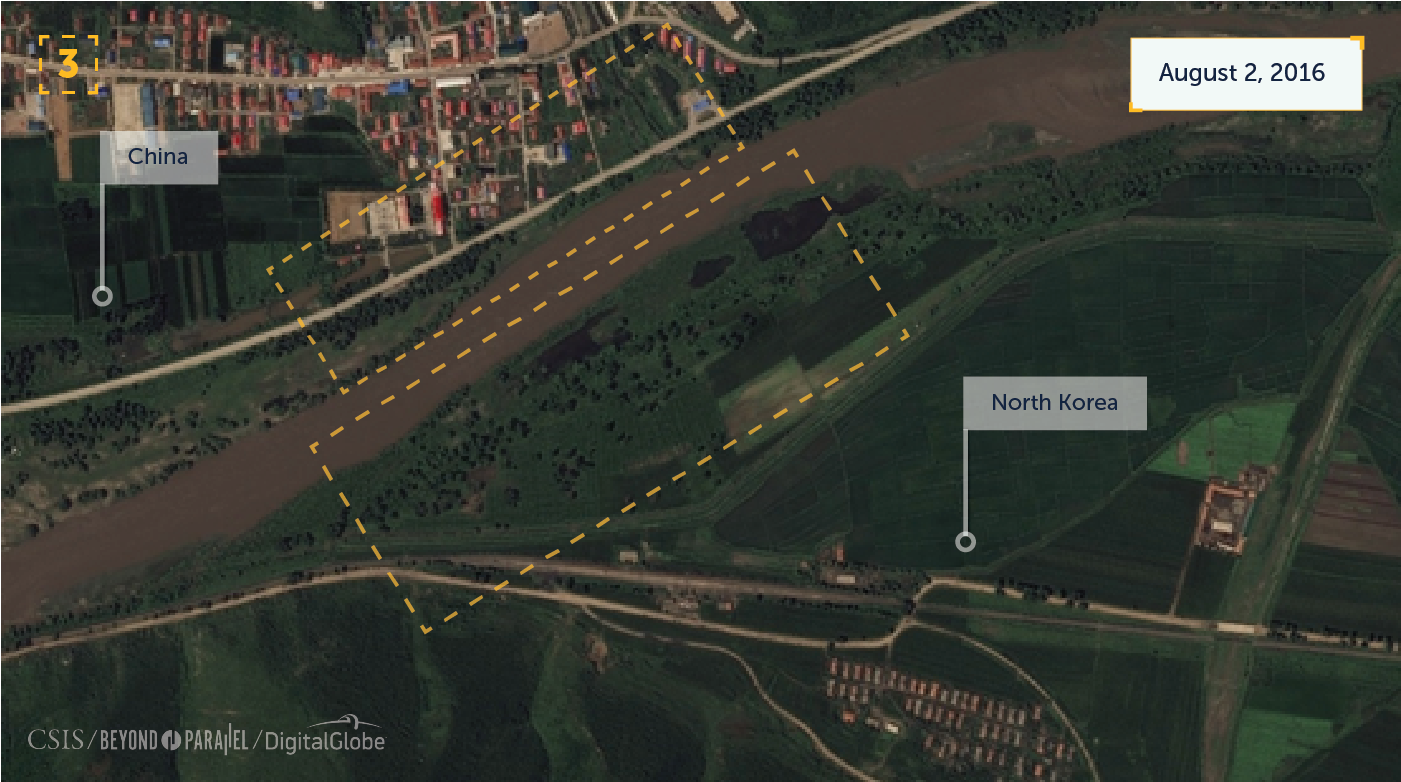
Post-flood image
In the wake of the flooding, agricultural fields were washed out and roads and irrigation canals damaged. Damage was also observed on the China side.
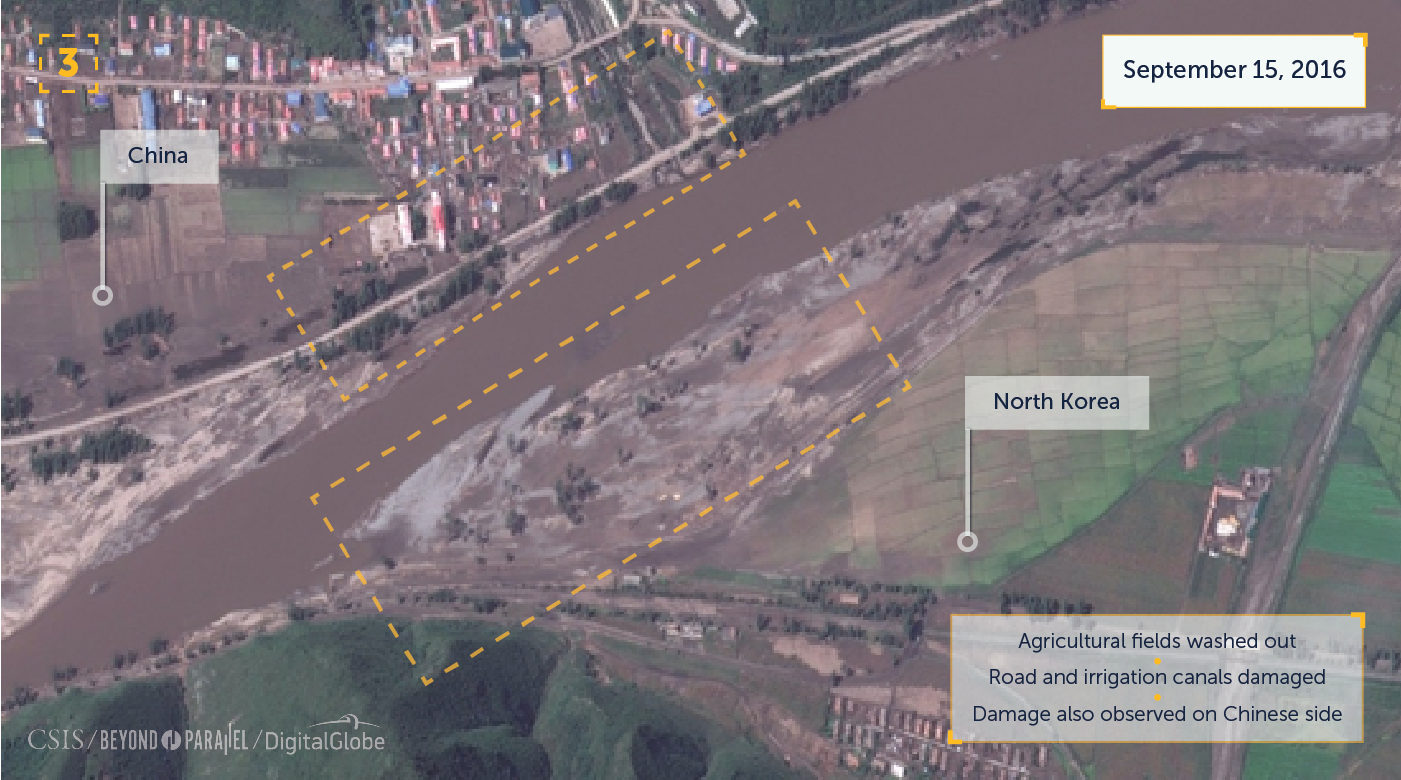
 Musan, North Korea Overview of Observed Flood Damage
Musan, North Korea Overview of Observed Flood Damage
There are 5 areas that were examined to assess damage from the 2016 floods. Two of these areas are displayed below.
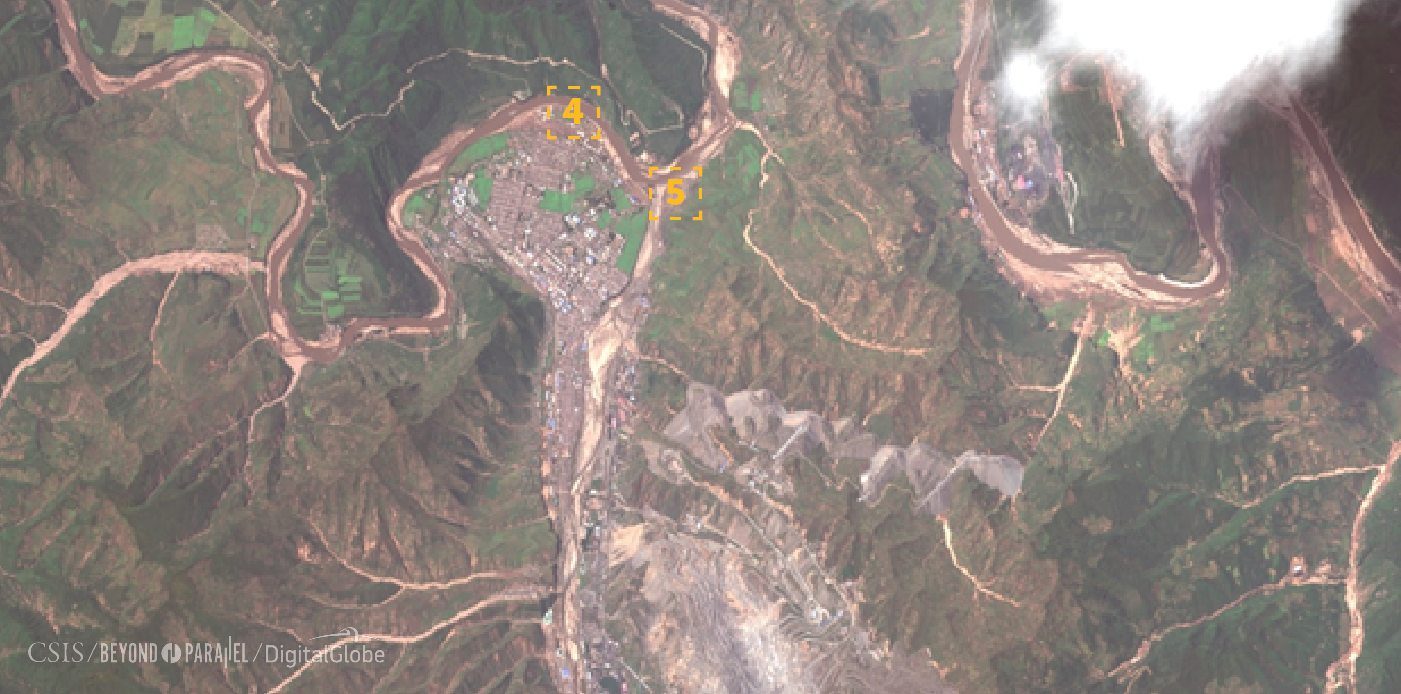
In the wake of the flooding, about 138 buildings have been destroyed/damaged, agricultural fields washed out, and road and irrigation canals damaged.
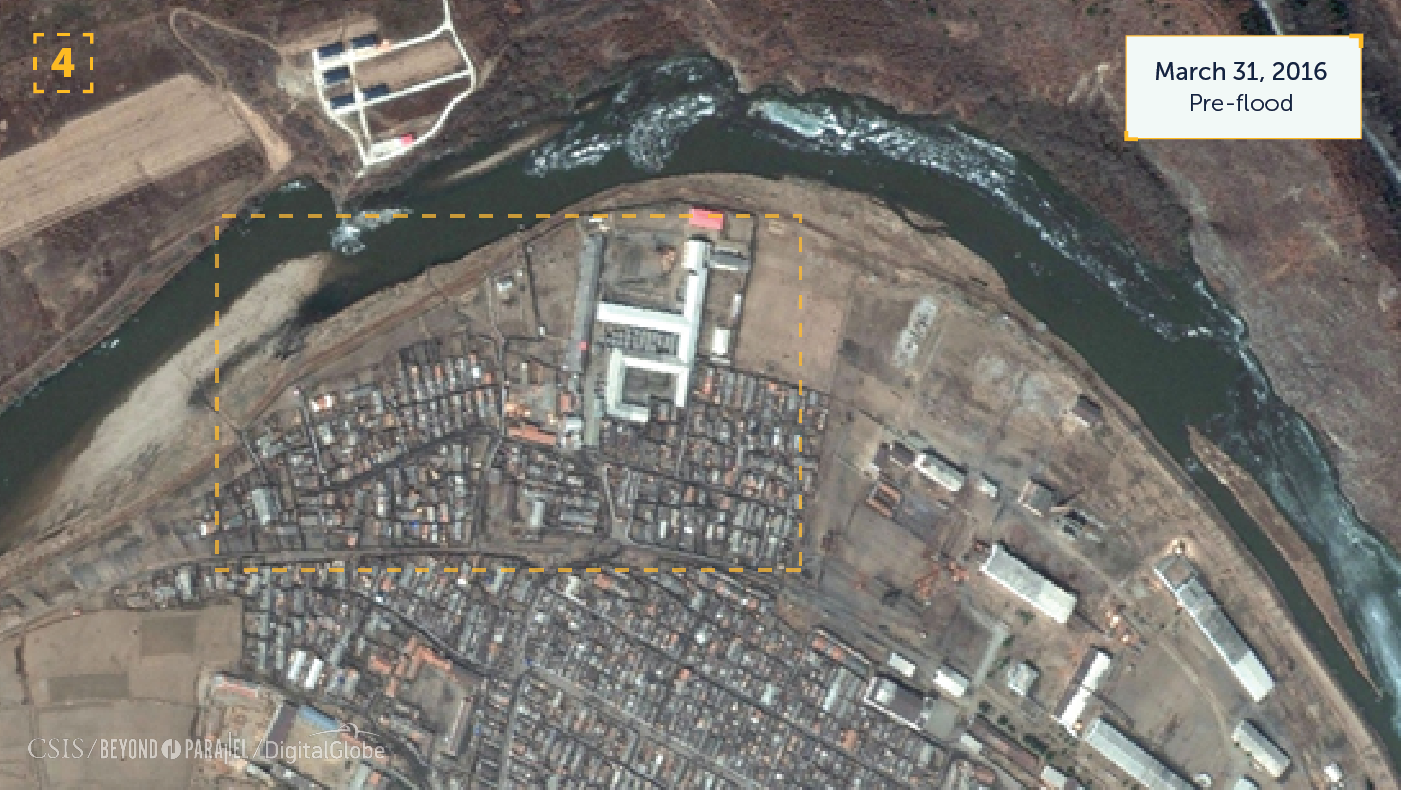
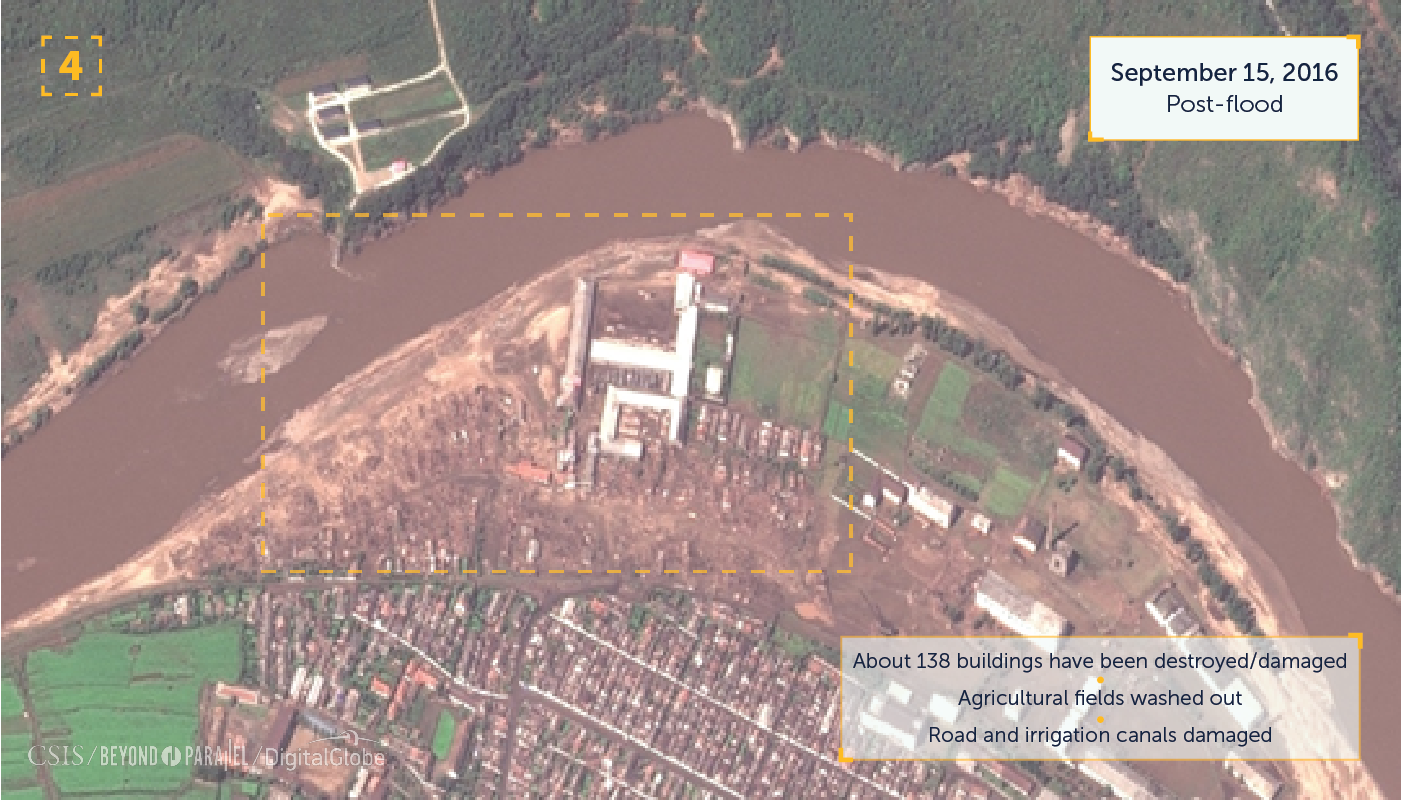
In the wake of the flooding, about 97 buildings have been destroyed/damaged, surrounding agricultural fields washed out, and road and irrigation canals damaged.
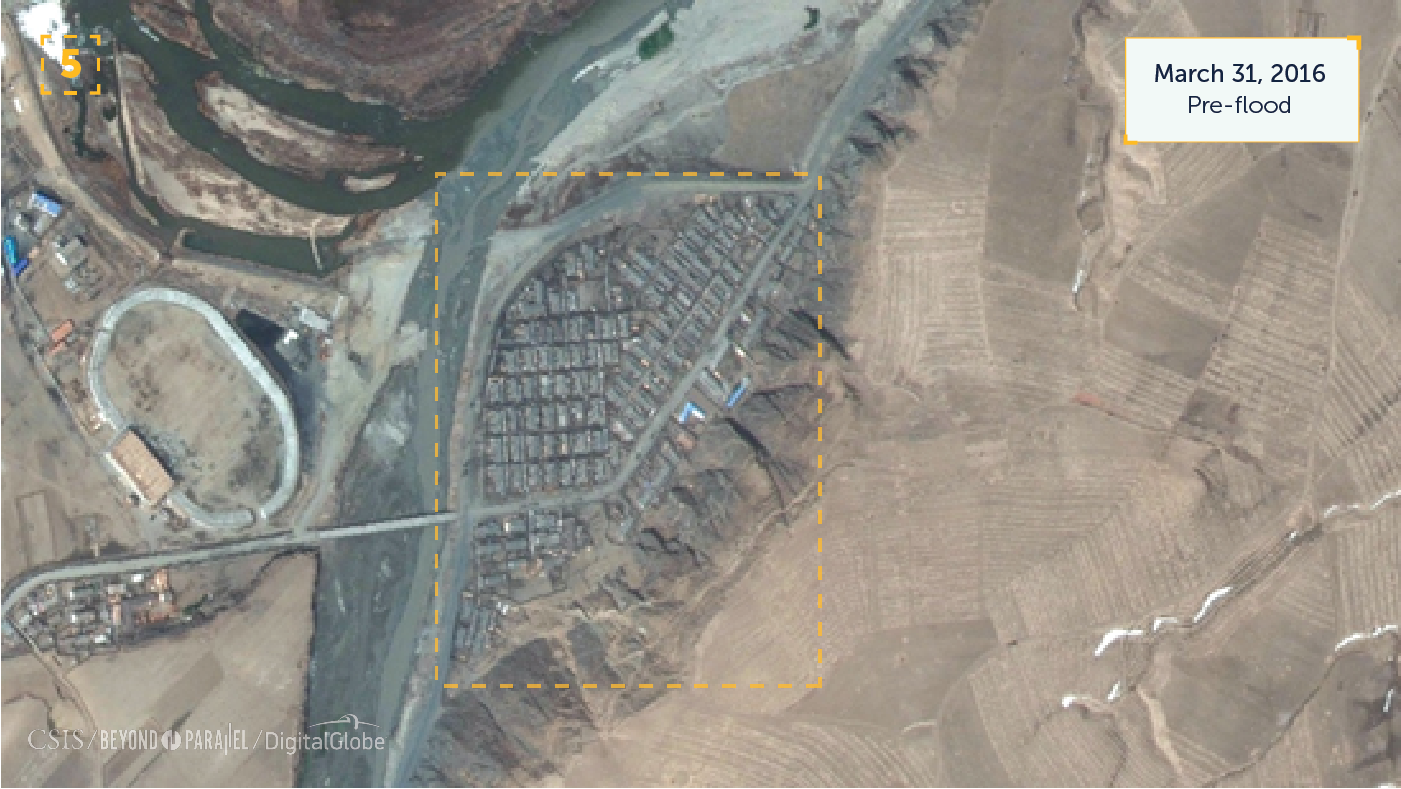
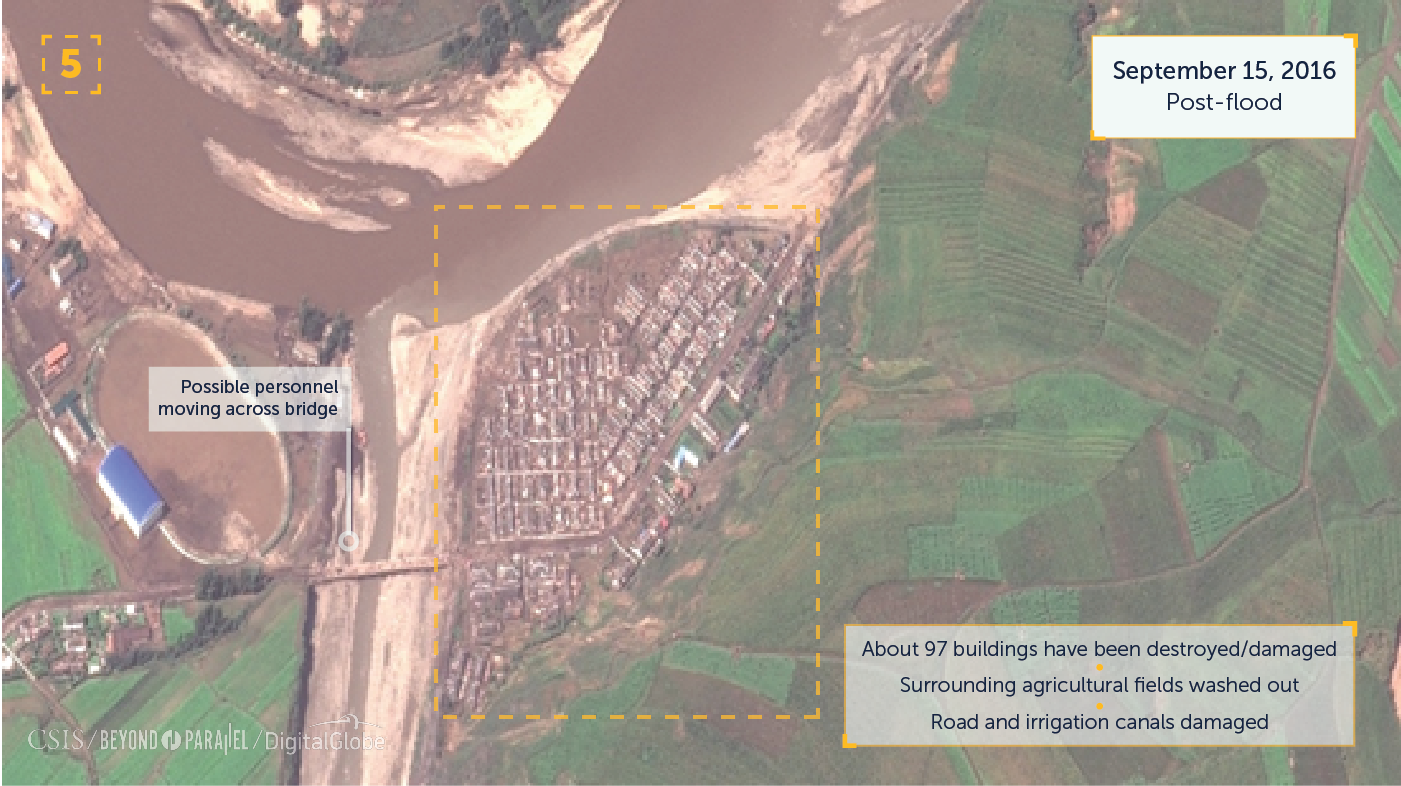

[carousel-horizontal-posts-content-slider-pro id='113']